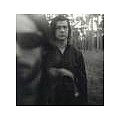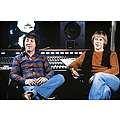What connects Norwegian black metal, French club anthems and London super-producer Paul Epworth? It sounds like a particularly intractable example of the six degrees of separation game. However, these seemingly irreconcilable points on the musical compass are linked by French dance rock four-piece Black Strobe. A simple enough answer. The explanation is going to take a little bit longer. Not as long as it took the band – Arnaud Rebotini (vocals and programming), David ‘Siskid’ Shaw (guitars and keyboards), Bastien Burger (bass and keyboards) and Benjamin Beaulieu (drums) – to record their debut album, however. Burn Your Own Church is a record ten years in the making. Happily, it’s worth the wait. Few bands manage to combine guitars and electronics as successfully as Black Strobe do here. First single Shining Bright Star is a stunning marriage of gut-butting bass guitar, droning synth and Arnaud’s menacing but melodic vocals. The opening track is called Brenn Di Ega Kjerke, Norwegian for ‘burn your own church’ and a nod to principal songwriter Arnaud’s fascination with the extreme sound of so-called black metal. Accordingly, it’s a crunchingly heavy song, pulsing synths colliding with guitars inspired by My Bloody Valentine’s 1991 album Loveless. It’s a darkly captivating formula repeated with great success on Blood Shot Eyes and You Should Be. The flip side to the band’s personality is Girl Next Door, as downbeat and spooky as a 4AM walk home. Perhaps the most surprising moment is a high-octane electronic cover of I’m A Man by rock’n’roll icon Bo Diddly, which will be the second single. The sum of these parts is a jaw-dropping debut. Burn Your Own Church may surprise anyone familiar with Black Strobe from early clubland hits such as Innerstrings and Me And Madonna. However, Arnaud sees nothing strange. “Especially if you think of Innerstrings and Me And Madonna, the album is a logical evolution,” he says. “Maybe people will be surprised because they think there’s not enough synth and too much guitar, but musically it’s a logical evolution. I like the idea that people will be surprised.” Arnaud wanted to make a record that reflected the full range of his taste. “It’s the summing up of a long musical background,” he explains. “The idea at the beginning was to do an album you can listen to at home, not a dance record. I wanted to keep the dance side in Black Strobe, but not to produce everything with electronics; I wanted to use guitars as well. I wanted to have some freedom. When you’re doing dance music you’ve got to really follow the rules so the DJ can play it. But it’s not really free. You can’t do everything you want. This album is about breaking out of those rules and bringing something to the essence of Black Strobe that I can’t have when I’m doing dance music. Such as the blues. Or country. Or the roots of rock’n’roll. The hypnotic side of black metal bands. To have proper songs. Some slow songs, too. To have the kind of instrumentation they have in classical music. I wanted to write music I really liked and something that reflected the music I grew up with. The idea was freedom.” Let’s go back to the beginning. Originally, the band was a duo comprised of Arnaud Rebotini and French DJ Ivan Smagghe. They became friends in the mid-’80s after repeatedly bumping into each other in front row at concerts. Both went on to work in the dance section of the Rough Trade record shop in Paris. They decided to form a band. The first thing Black Strobe recorded was an acid house track called Paris Acid City, which was featured on the Sourcelab 3 compilation in 1996. They didn’t follow it up until 1999, when they released Innerstrings, which referenced early ’80s synth pop a good two years before electroclash was cool. Meanwhile, their third single, Me And Madonna, became one of electroclash’s anthems. Not that Black Strobe were ever part of the scene. They were always too spiky for that. From the beginning, Arnaud knew that playing live was central to Burn Your Own Church. “When I started writing the album, I said, We need to be able to perform these songs,” he remembers. “I thought about what the songs would sound like live. I didn’t want to record the album and then have to think about how to play it live. If there were songs that didn’t work live, we didn’t put them on the album. There were five or six like that. Maybe some of them will be B-sides.” As a result, Black Strobe have developed into a thrilling live act, with Arnaud an imposing, gravel-voiced front man – a thicker set Nick Cave, perhaps. However, Ivan was less comfortable with performing and decided to leave the band to concentrate on his DJ career. It was an amicable parting and his influence can still be heard on Burn Your Own Church – before he left he wrote most of the lyrics. Burn Your Own Church may be heavier and more rock-oriented than anything the band have done before, but it’s not entirely without precedent. The B-side to Chemical Sweet Girl was The Abwehr Disco, which recalled nothing so much as Metallica making heavy metal with synths. On the Black Strobe MySpace site, Arnaud says that he wants to make music that scares people. He’s joking, but only a bit. When he was young, Arnaud’s father was into soul, blues and rock’n’roll. As a teenager, he became interested in “noisy bands” such as Sonic Youth. The first band he played in was a death metal group called Swamp. His obsession with extreme music continues to this day, whether it’s pounding industrial noise like Nurse With Wound, the experimentation of Karlheinz Stockhausen or Norwegian black metal bands such as Burzum or Darkthrone. “They’ve made some really amazing albums,” says Arnaud of the latter. “People always talk about punk, but these guys are the only real punks left.” He continues: “I like what Stockhausen said. That you can think of music as sonic objects and use those sonic objects to construct another sonic object, like building blocks.” One of the other building blocks Arnaud used on Build Your Own Church is the epic sweep of classical music. Arnaud is a big classical buff. He works for GRM (Groupe de Recherches Musicales), a French organistion founded by Pierre Shaeffer, the French avant-garde composer and pioneer of musique concrete. Helping Black Strobe assemble these wide-ranging and hugely ambitious influences was producer Paul Epworth, best known for his work with Bloc Party, Maxïmo Park and The Futureheads. Having written Burn Your Own Church in his home studio in Paris, Arnaud and the band recorded it at Epworth’s Eastcote Studios in West London over three weeks at the start of 2006. It was then mixed by Alan Moulder (U2, Nine Inch Nails and Marilyn Manson). “I learned a lot from Paul,” says Arnaud. “He makes electronic music as Phones, but also produces proper rock bands. He has a big studio knowledge. He was definitely the right guy for us. When I found out we could have him, I was like, Great.” Only one question remains: what took them so long? “Because it was quite difficult,” laughs Arnaud. “It was hard to find a good way to get out of dance music. We had to learn how to be a band. We had to learn how to play live. We had to take some time.” Ultimately, it’s worked to Black Strobe’s advantage. Arnaud name checks Klaxons and The Horrors. “I think we’re quite close to Klaxons in terms of production, although maybe we are a little bit darker because of the low voice and the different influences. But we have the same mood, the same mix of synths and guitars.”Indeed, a hybrid of Klaxons and The Horrors isn’t the worst description of Black Strobe. The last word goes to Arnaud. “The album is a collection of raw songs about love, addiction, (self) waste,” he says. “It’s an album made by guys who love burn their own church.” Meet Black Strobe – if you dare.





















